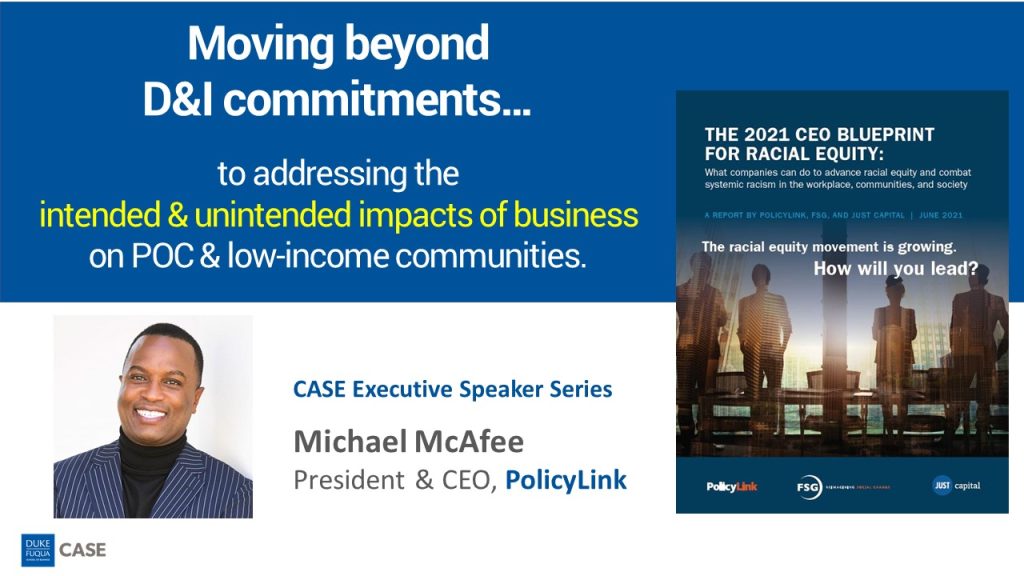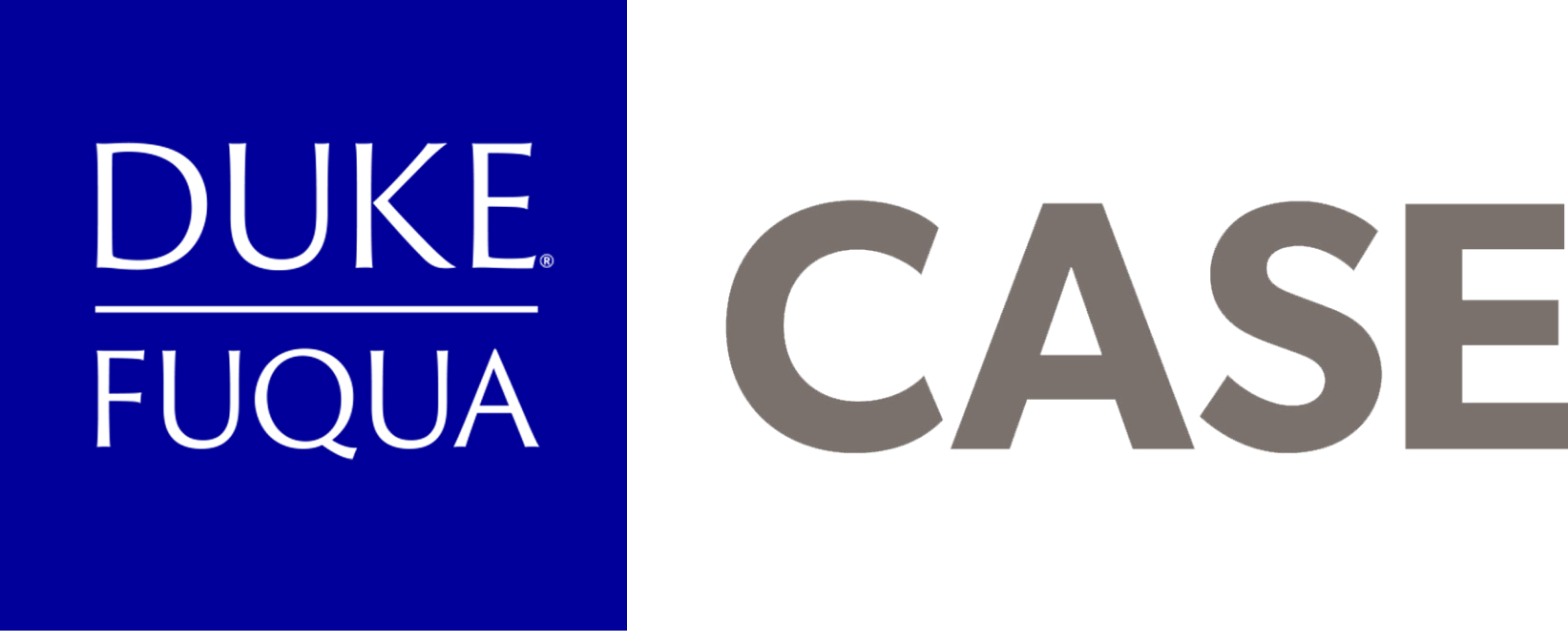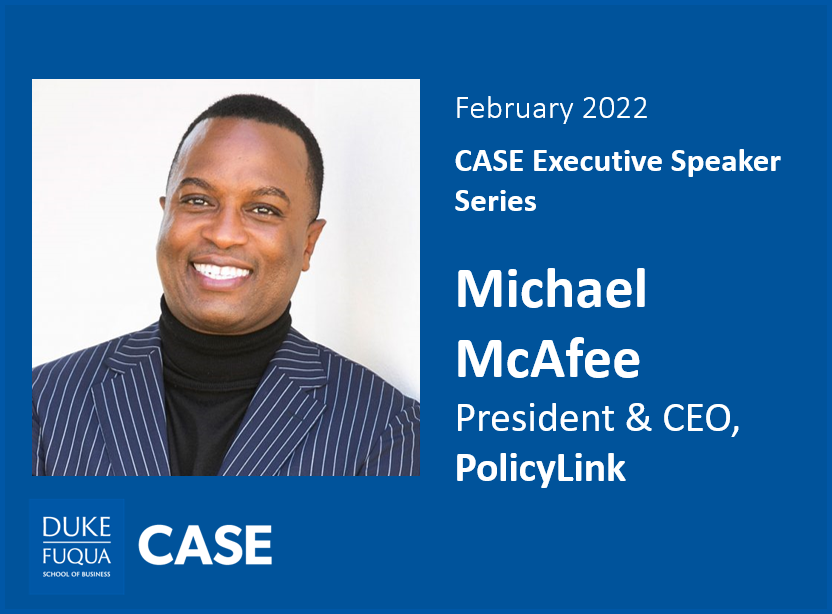February 2022
“Sometimes my tone can sound absolute, but I am still learning and growing,” PolicyLink President and CEO Michael McAfee cautioned as he dove into a conversation with CASE Executive Director Erin Worsham as a part of CASE’s Executive Speaker Series.
McAfee, noted for many accomplishments, is a “catalyst for a new and growing body of work — corporate racial equity;” his efforts in this area have included co-authoring the CEO Blueprint for Racial Equity which provides recommendations for business leaders to advance racial equity and combat systemic racism in the workplace, communities, and society.

McAfee shared so many thought-provoking insights and wisdom that a written recap cannot even creep close to doing justice – but as McAfee imparted to us, you still need to “fake it until you make it.” (More on that below…) So, we hope that a taste of the wisdom and observations from the conversation (as captured here) will leave you wanting more… at which point you can just click here to watch the full 60 minute interview.
The Trap of the “Business Case” for Racial Equity
In the business environment, making a change usually requires “making a business case” for why something should or should not be done. Of course, there are many studies presenting an economic case for closing racial disparities, and making a business case for diversifying teams. But, McAfee challenged us, why do we need to “make a case” for racial equity in the business sphere (or in any sphere, for that matter)? If the economic or business case was all that mattered, we would have done the work already. He questions why we need to reduce humans and humanity to “a case” – and said that the case “trap” won’t get us the results we want. Rather, we need to create the space for people to grow into the concept of racial equity – as many business leaders are currently doing.
So, What’s Changing?
Through McAfee’s work, he has seen an increasing number of CEOs embarking upon their own journeys of reckoning with racial injustice and inequity. These CEOs are working to transform themselves and their organizations. And while it’s still early days in centering racial equity within the sphere of business, McAfee did share a few promising examples including: an Advancing Black Pathways initiative at JP Morgan Chase, Silicon Valley firms setting up labs with HBCUs to cultivate the talent pipeline, new products being created by Prudential to respond to changing demographics (e.g., a portable benefits package to respond to data about more rapid job changes among people of color), and corporations advocating for the abolishment of cash bail because it undercuts work toward individuals’ financial security. More profiles are included in the CEO Blueprint report, including Procter & Gamble’s work to disrupt racial bias; PayPal & the Worker Financial Wellness Initiative; Rhino Foods providing employer-sponsored small dollar loans, and more. As McAfee remarked about the pace of his own learning journey, “I don’t have to ‘get it’ to change it” – meaning that you can (and should) participate in the work of equity even if you are still undergoing your own transformation.
How Are They Doing It? How Do They Know What to Do?
“If, at work, I said ‘I don’t know how to do something and I’m not going to learn,’ they are going to fire me,” remarked McAfee. It’s the same with the work on racial equity; you don’t get off the hook of doing something just because you aren’t sure where to start.
“You may not know now [how to proceed], but you do know how to learn. [Not knowing now] doesn’t mean you don’t have to learn,” McAfee emphasized.
He followed up in jest, “You’ve got to fake it until you make it.” To aid in that learning process, the CEO Blueprint for Racial Equity advises corporate leaders to take action across the three core domains of their influence: within the company itself; within the communities in which they operate; and at the societal level. The report outlines, and prioritizes, a variety of concrete steps from conducting racial equity audits to advocating for local policies that address structural inequities to placing assets with CDFIs and other people of color-led institutions.

